After Hong Kong: China sets sights on solving ‘the Taiwan problem’
Get our headlines on WHATSAPP: 1) Save +1 (869) 665-9125 to your contact list. 2) Send a WhatsApp message to that number so we can add you 3) Send your news, photos/videos to times.caribbean@gmail.com

An invasion may not be imminent but experts say armed forces could have capacity to mount one by the end of the decade
by Emma Graham-Harrison and Helen Davidson
Soon after China imposed thenew national security law that effectively ended Hong Kong’s limited autonomy, a hawkish legal academicin Beijing spelt out a warning to Taiwan.
The law was not just about ending a year of protests in Hong Kong, Tian Feilong said in an interview with DW News, it was also sending a message to Taipei – and to Washington, which has recently approved new arms sales and high-level visits by US officials to self-rule Taiwan.
The provisions being used to crush dissent across Hong Kong could provide a template, he argued, for tackling “the Taiwan problem”.
“I believe that in the future, you could just change the name of the Hong Kong national security law, and substitute instead ‘Taiwan national security law’,” said Tian.
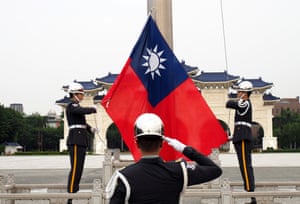
To implement a national security law in Taiwan, Beijing would first need to take military control of the island, which has had its own government since the end of the Chinese civil war in 1949.
An invasion once seemed unlikely, both because China lacked the military capacity to take an island armed with advanced US weaponry, and because it could not afford the international reaction to such a move.
Neither of those restraining factors hold true now. Since 2013 the Chinese president, Xi Jinping, has presided over an extensive military overhaul, increasing investment in hi-tech weapons and shaking up an antiquated structure that sidelined the navy and airforce, both of which would be vital for a successful invasion of an island.
“Being able to sail over to Taiwan and occupy [it by force] … is for the first time in the history of China, going to be possible,” said Dr Oriana Skylar Mastro, a fellow at Stanford University who specialises in Chinese military and security policy.Q&A
The fight for Hong Kong
Chinese analysts have told Mastro that the People’s Liberation Army (PLA) could have the capacity to mount an invasion of Taiwan in a year or two; she and other US experts believe the real date will be towards the end of the decade, perhaps 2028.
“Even if you think China won’t do that [invade], it surely is going to change the calculations to have that option in the back of their head,” Mastro said. “I would argue that they’re likely to be a little bit more risk taking, a little bit more aggressive.”
Xi has already upended a decade-long commitment to cautious foreign policy, encapsulated by a favourite maxim of the former leader Deng Xiaoping: “Hide your strength, bide your time.” Deng, who ushered in far-reaching market reforms, argued that China could not afford international tensions and should avoid aggression as its economy recovered from the ravages of Maoism.
Now Xi, who has promised a “national rejuvenation”, leads the world’s second largest economy and has pursued an aggressive foreign policy, including territorial claims from the border with India in the west to the South China Sea in the east.

Ho-fung Hung, professor of political economy at Johns Hopkins University, does not think an invasion of Taiwan is imminent, but says Hong Kong’s security law sent a very clear message about China’s long-term plans.Advertisement
“The national security law in Hong Kong is very important to show that Beijing is ready to defy international outcry,” he said. “It will be a kind of a warning to Taiwan: ’Don’t think that Beijing would not take military action. Don’t think that we will fear international reaction.’”
‘Reunifying’ Taiwan
Taiwan has enjoyed de-facto independence since the end of the civil war in 1949, when the losing Kuomintang faction fled to the island. Its leader, Chiang Kai-shek, presided for years over a dictatorship, dreaming of retaking mainland China.
But a slow democratisation process began in 1987, and since then Taiwan has become a robust liberal democracy, the only place in Asia to have legalised gay marriage, and whose population increasingly identify as Taiwanese, not Chinese.
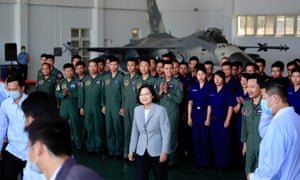
For a variety of reasons, most notably its world-leading success in responding to the coronavirus pandemic, Taiwan’s global status has grown dramatically in 2020. This month Time magazine put president Tsai Ing-wen on its 100 most influential people list.
But Beijing has never renounced the use of force to bring Taipei back under Chinese control, and Xi has made clear in recent years that “reunifying” Taiwan with China is a key goal.
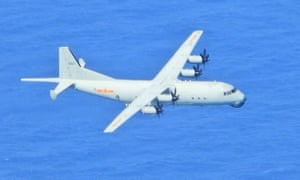
Advertisement
Amid escalating broader tensions with the US and with politicians worldwide distracted by the coronavirus pandemic, top Chinese officials have been using unusually aggressive rhetoric in recent months. There has also been an escalation in military provocations by China, including incursions into Taiwanese airspace and drills near the island’s territorial waters.
Hong Kong is a mirror of our futureWang Ting-yu
The latest challenge came during a recent visit by Keith Krach, US undersecretary of state for economic affairs. The PLA sent nearly 40 aircraft across the median line of the strait of Taiwan, an unofficial dividing line that had been largely respected by both sides, until China began regularly crossing it last year, and in September denied it existed.

Taiwan’s foreign minister told China to “back off”, and Wang Ting-yu, who chairs Taiwan’s foreign affairs and defence committee, insists the Taiwanese military could hold off the PLA despite some major gaps in its underwater and missile capabilities.
“Hong Kong is a mirror of our future if Taiwan becomes part of China,” he said, pointing out that Tsai has bolstered defence spending. “We have to protect our national security.” But Wang’s words are more the bravado of a politician, than the assessment of a military analyst.
For decades Taiwan has been protected by the sophistication of weapons Washington has sold to the island – $23bn (£17.8bn) worth over the past decade – and by the prospect of military help from the US fleet and bases around the region in case of invasion.
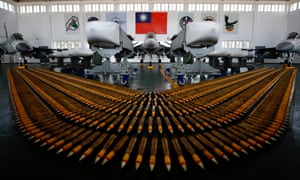
Advertisementhttps://62e2eeae57f94b98f843f982b2358e92.safeframe.googlesyndication.com/safeframe/1-0-37/html/container.html
The Taiwanese military is dwarfed by its Chinese counterpart – Taiwan has less than a fifth of China’s planes, a 10th of its armed forces personnel and just o1% of its missiles.
The details of the US military aid has never been spelt out. Washington has instead embraced a policy of “strategic ambiguity”, which aims to deter China from attacking Taiwan and deter Taipei from provoking military aggression from Beijing.
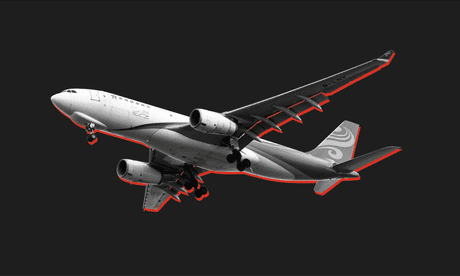
‘In my dreams I’m there’: the exodus from Hong Kong
Read more
‘The unsinkable aircraft carrier’
But there are increasingly urgent calls in the US for a more proactive policy, to respond to a more aggressive China. The Trump administration has already publicly stepped up support for Taiwan in diplomatic and military areas while wider US-China relations have deteriorated further.
“The policy of ‘strategic ambiguity’ is dead,” said James Fanell, a retired naval officer, who was director for intelligence and information operations for the US navy’s Pacific fleet.
Over a 30-year career Fanell specialised in Indo-Asia Pacific security affairs, with an emphasis on the Chinese navy. He argues that a stronger regional military presence and firmer commitment to Taiwan’s defence is necessary to protect the island.
“The US military posture in Asia has essentially remained consistent in terms of military force structure for the past two decades. While that force structure would have been adequate two decades ago, it is wholly inadequate today,” Fanell said.

Washington should shift its deployments away from the Atlantic, so 60% to 70% of US navy and air force is focused on the Indo-Pacific region, Fanell said. This would not be a disinterested policy. Taiwan is an important ally, but its location is also strategically important if the US wants to counter Chinese influence in the region.Advertisement
“Like Japan understood in the second world war, Taiwan is the unsinkable aircraft carrier that can launch attacks southwards towards the South China Sea, eastward against places like Guam, and northwards towards Japan and events on the Korean peninsula. This fact is well understood in Washington,” Fanell said.
China and the US have been close to military conflict over Taiwan before, in the 1950s, and in the 1990s, but the relationship between Beijing and Washington may now be approaching its most volatile stage in decades.
Big tech firms may be handing Hong Kong user data to China
Even if Beijing is not yet ready to risk a full-scale invasion, it may consider other military action against Taiwan, to test Taiwanese and international response to aggression while bolstering its strategic position, said Dr Mathieu Duchâtel, director of the Asia programme at the Institut Montaigne.
“Limited coercive actions to shape public opinion in Taiwan through shock and fear are a realistic scenario,” he argued in a recent analysis. “China has real options, a record of calculated risk under Xi Jinping, deep concerns regarding the future course of US-Taiwan relations, and a lack of realistic soft alternatives to ‘seduce’ [Taiwan].”
One possible target are the Pratas islands, three atolls with no permanent inhabitants and hundreds of miles south of Taipei. A large-scale cyber-attack on critical infrastructure is another potential scenario, said Duchâtel.
Mastro said war between China and the US over Taiwan was more likely than people realise. She argues the best way to stave off conflict is an aggressive commitment to Taiwan’s security from Washington and a beefing up of US military capacity in the region.
“The United States focuses on imposing costs on China, but the benefits to regaining Taiwan – in the minds of the Chinese government – are so huge, it’s really hard to think of a cost that could dissuade them if that was a possibility,” Mastro said.
Leave a comment
You must be logged in to post a comment.